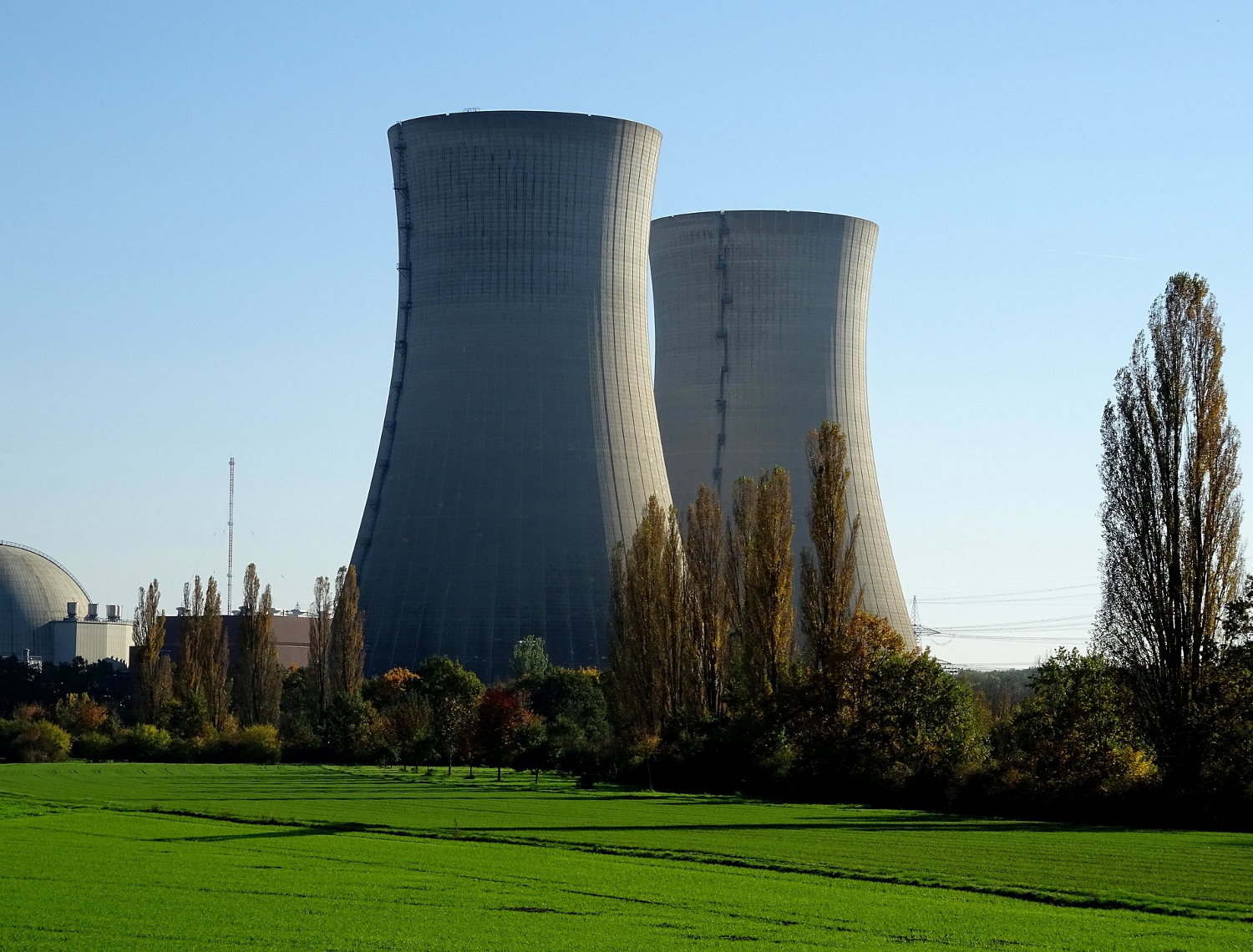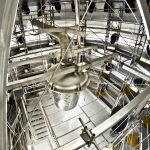Nuclear: a multitude of scenarios to help imagine the future of the industry
Article written in partnership with The Conversation.
By Stéphanie Tillement and Nicolas Thiolliere, IMT Atlantique.
[divider style=”normal” top=”20″ bottom=”20″]
[dropcap]N[/dropcap]uclear energy plays a very important role in France – where 75 % of the country’s electricity is produced using this energy – and raises crucial questions concerning both its role in the future electricity mix and methods for managing the associated radioactive materials and waste.
But the discussions held as part of the recent Multiannual Energy Plan (PPE) gave little consideration to these issues. The public debate on radioactive material and waste management set to launch on Wednesday 17 April may provide an opportunity to delve deeper into these issues.
Fifty-eight pressurized water reactors (PWR), referred to as “second generation,” are currently in operation in France and are responsible for producing the majority of the country’s electricity. Nineteen of these reactors, were put into operation before 1981 and will reach their design service life of 40 years over the next three years.
The future of the nuclear industry represents a crucial question, which will likely have a lasting effect on all industry stakeholders – electricity producers, distribution system operators, energy providers and consumers. This means that all French citizens will be affected.
Imagining the future of the nuclear industry
Investment decisions regarding the electricity sector can establish commitments for the country that will last tens, or even hundreds of years, and this future clearly remains uncertain. Against this backdrop, forward-looking approaches can help plan for the future and identify, even partially, the possible consequences of the choices we make today.
Such an approach involves first identifying then analyzing the different possible paths for the future in order to asses them and possibly rank them.
The future of the nuclear industry includes a relatively wide range of possibilities: it varies according to the evolution of installed capacity and the pace with which new technologies (EPR technology, referred to as “third generation” or RNR technology, referred to as “fourth generation”) are deployed.
Given the great degree of uncertainty surrounding the future of the nuclear industry, research relies on simulation tools; the “electronuclear scenario” represents one of the main methods. Little-known by the general public, it differs from the energy scenarios used to inform discussions for the Multiannual Energy Plan (PPE). The nuclear scenario represents a basic building block of the energy scenario and is based on a detailed description of the nuclear facilities and the physics that controls them. In practice, energy and nuclear scenarios can complement one another, with the outcomes of the former representing hypotheses for the latter, and the results of the latter making it possible to analyze in greater detail the different paths set out by the former.
The aim of studying the nuclear scenario is to analyze one or several development paths for nuclear facilities from a materials balance perspective, meaning tracking the evolution of radioactive materials (uranium, plutonium, fission products etc.) in nuclear power plants. In general, it relies on a complex modeling tool that manages a range of scales, both spatial (from elementary particle to nuclear power plants) and temporal (from less than a microsecond for certain nuclear reactions to millions of years for certain types of nuclear waste).
Based on a precise definition of a power plant and its evolution over time, the simulation code calculates the evolution of the mass of each element of interest, radioactive or otherwise, across all nuclear facilities. This data can then serve as the basis for producing more useful data concerning the management of resources and recycled materials, radiation protection etc.
Emergence of new players
Long reserved to nuclear institutions and operators, the scenario-building process has gradually opened up to academic researchers, driven largely by the Bataille Law of 1991 and the Birraux Law of 2006 concerning radioactive waste management. These laws resulted in a greater diversity of players involved in producing, assessing and using scenarios.
In addition to the traditional players (EDF and CEA in particular), the CNRS and academic researchers (primarily physicists and more recently economists) and representatives of civil society have taken on these issues by producing their own scenarios.
There have been significant developments on the user side as well. Whereas prior to the Bataille and Birraux Laws, nuclear issues were debated almost exclusively between nuclear operators and the executive branch of the French government, giving rise to the image of issues confined to “ministerial secrecy,” these laws have allowed for these issues to be addressed in more public and open forums, in particular in the academic and legislative spheres.
They also created National Assessment Committees, composed of twelve members selected based on proposals by the Académie des Sciences, the Académie des Sciences Morales et Politiques, and the French Parliamentary Office for the Evaluation of Scientific and Technological Choices. The studies of scenarios produced by institutional, industrial and academic players are assessed by these committees and outlined in annual public reports sent to the members of the French parliament.
Opening up this process to a wider range of players has had an impact on the scenario-building practices, as it has led to a greater diversity of scenarios and hypotheses on which they are based.
A variety of scenarios
The majority of the scenarios developed by nuclear institutions and industry players are “realistic” proposals according to these same parties: scenarios based on feedback from the nuclear industry. They rely on technology already developed or in use and draw primarily on hypotheses supporting the continued use of nuclear energy, with an unchanged installed capacity.
The scenarios proposed by the research world tend to give less consideration to the obligation of “industrial realism,” and explore futures that disrupt the current system. Examples include research carried out on transmutation in ADS (accelerator-driven reactors), design studies for MSR (molten salt reactors), which are sometimes described as “exotic” reactors, and studies on the thorium cycle. A recent study also analyzed the impact of recycling the plutonium in reactors of the current technology, and as part of a plan to significantly reduce, or even eliminate, the portion of nuclear energy by 2050.
These examples show that academic scenarios are often developed with the aim of deconstructing the dominant discourse in order to foster debate.
Electronuclear scenarios clearly act as “boundary objects.” They provide an opportunity to bring together different communities of stakeholders, with various knowledge and different, and sometimes opposing, interests in order to compare their visions for the future, organize their strategies and even cooperate. As such, they help widen the “scope of possibilities” and foster innovation through the greater diversity of scenarios produced.
Given the inherent uncertainties of the nuclear world, this diversity also appears to be a key to ensuring more robust and reliable scenarios, since discussing these scenarios forces stakeholders to justify the hypotheses, tools and criteria used to produce them, which are often still implicit.
Debating scenarios
However, determining how these various scenarios can be used to support “informed” decisions remains controversial.
The complexity of the system to be modeled requires simplifications, thus giving rise to biases which are difficult to quantify in the output data. These biases affect both technical and economic data and are often rightly used to dispute the results of scenarios and the recommendations they may support.
How, then, can we ensure that the scenarios produced are robust? There are two opposing strategies: Should we try to build simple or simplified scenarios in an attempt to make them understandable to the general public (especially politicians), at the risk of neglecting important variables and leading to “biased” decisions? Or, should we produce scenarios that are complex, but more loyal to the processes and uncertainties involved, at the risk of making them largely “opaque” to decision-makers, and more broadly, to the citizens invited to take part in the public debate?
As of today, these scenarios are too-little debated outside of expert circles. But let us hope that the public debate on radioactive waste management will provide an excellent opportunity to bring these issues to a greater extent into the “scope of democracy,” in the words of Christian Bataille.
[divider style=”dotted” top=”20″ bottom=”20″]
Stéphanie Tillement, Sociologist, IMT Atlantique – Institut Mines-Télécom and Nicolas Thiolliere, Associate Professor in reactor physics, IMT Atlantique – Institut Mines-Télécom
This article has been republished from The Conversation under a Creative Commons license. Read the original article (in French).





Leave a Reply
Want to join the discussion?Feel free to contribute!